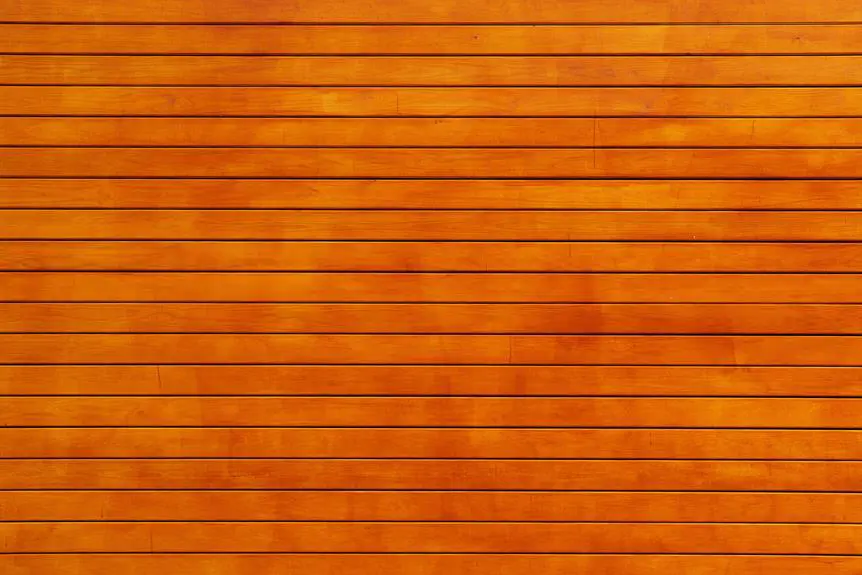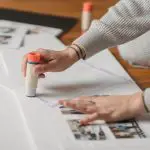Looking to affix fabric to wood for your next project? You've come to the right place! Mastering the art of adhering fabric to wood opens up a world of creative possibilities.
In this guide, we'll explore five simple yet effective methods to securely bond fabric to wood surfaces. From the convenience of adhesive spray to the precision of fabric glue, you'll discover the perfect technique for your project.
No need to stress about adhesive mishaps – with these easy-to-follow methods, you'll be seamlessly attaching fabric to wood like a pro in no time.
So, let's dive in and explore these five easy ways to glue fabric to wood!
Key Takeaways
- Prepare the wood surface by cleaning it and removing any dust or debris.
- Choose a high-quality fabric glue or adhesive spray for better results.
- Take your time when applying the fabric, smoothing out wrinkles or air bubbles.
- Seal the fabric edges with fray check or fabric sealant to prevent fraying.
Adhesive Spray Method
You can use an adhesive spray to easily and securely attach fabric to wood. When using spray adhesive, it's important to prepare the wood surface properly. Start by ensuring the wood is clean and free of any dust or debris. This will help the adhesive bond better and create a smoother finish. Additionally, consider lightly sanding the wood to create a slightly rough surface, which can further improve the adhesion of the fabric.
When applying the fabric, consider using a light, even layer of adhesive on the wood surface. It's best to work in a well-ventilated area and to cover any surrounding surfaces to prevent overspray. After spraying the adhesive, carefully lay the fabric onto the wood, smoothing it out to remove any wrinkles or air bubbles. It's also important to work relatively quickly to ensure the adhesive doesn't dry before the fabric is applied.
Following these spray adhesive tips and best practices for wood surface preparation and fabric application techniques will help you achieve a professional and durable result when gluing fabric to wood.
Mod Podge Technique
The Mod Podge technique offers an alternative method for securely attaching fabric to wood, providing a versatile option for your crafting projects.
When using the Mod Podge technique, consider the following:
- Mod Podge alternatives: While traditional Mod Podge works well for most fabric-to-wood projects, there are specialized formulas available. For instance, consider using Mod Podge Fabric formula for a stronger bond on fabric or Mod Podge Outdoor formula for projects exposed to the elements.
- Fabric sealing techniques: Before applying Mod Podge, it's essential to seal the fabric to prevent fraying and enhance durability. Consider using fray check or fabric sealant to seal the edges of the fabric. This step ensures a clean and professional finish.
- Application tips: When applying Mod Podge, use a foam brush or a soft bristle brush for smooth and even coverage. Apply a thin, even layer of Mod Podge to the wood surface and press the fabric firmly onto the wood, smoothing out any wrinkles or air bubbles.
Fabric Glue Application
When using fabric glue to attach fabric to wood, it's important to choose a high-quality adhesive that provides a strong and durable bond. Before applying fabric glue, ensure that the wood surface is clean, dry, and free from any dust or debris. This will help the glue adhere better and create a long-lasting bond. Additionally, it's advisable to lightly sand the wood surface to create a slightly rough texture, which can further enhance the adhesion of the fabric glue.
When applying the fabric glue, use a small, clean brush or a toothpick to spread the adhesive evenly on the wood surface. Be sure to apply the glue thinly and avoid using too much, as excess glue can seep through the fabric and create a messy appearance. It's also essential to follow the manufacturer's instructions regarding the drying time and any specific application techniques for the fabric glue you're using.
To ensure a professional and polished look, take your time when applying the fabric to the wood, smoothing out any wrinkles or air bubbles as you go. Once the fabric is in place, apply gentle pressure to ensure a secure bond. These fabric glue tips, along with proper wood surface preparation, will help you achieve a successful and durable fabric-to-wood bond.
Double-Sided Tape Trick
Using double-sided tape can be a helpful alternative for attaching fabric to wood when traditional fabric glue isn't available or suitable for the project. When using double-sided tape to attach fabric to wood, there are several crucial steps to ensure a secure and professional finish:
- Surface Preparation:
- Clean the wood surface thoroughly to remove any dust, dirt, or debris that could affect the tape's adhesion.
- Ensure the wood surface is dry before applying the double-sided tape to promote a strong bond.
- Fabric Positioning:
- Carefully position the fabric onto the wood surface, ensuring it's aligned correctly before pressing it onto the double-sided tape.
- Smooth out the fabric to remove any wrinkles or air bubbles, ensuring it adheres evenly to the wood.
- Securing Edges:
- Pay special attention to the edges of the fabric, ensuring they're firmly secured to prevent peeling or lifting over time.
Heat Bonding Process
To bond fabric to wood using a heat bonding process, position the fabric onto the wood surface and apply consistent heat and pressure using a heat-activated adhesive.
To initiate the ironing technique, set your iron to the appropriate temperature for the fabric type. Use a pressing cloth to protect the fabric and apply the iron with firm pressure, moving it in a circular motion for even heat distribution. This method ensures optimal fabric adhesion to the wood.
Temperature control is crucial during the ironing process to prevent scorching or melting of the fabric. It also plays a key role in determining the bonding strength between the fabric and wood. As you apply the heat, keep an eye on the temperature and adjust as needed.
The right temperature will activate the adhesive, allowing it to bond the fabric securely to the wood. By mastering the ironing technique and controlling the temperature, you can achieve a strong and durable bond between fabric and wood using the heat bonding process.
Frequently Asked Questions
Can I Use Any Type of Fabric With the Adhesive Spray Method?
Yes, you can use various types of fabric with adhesive spray method. Consider the fabric's weight, texture, and composition for best results. Additionally, ensure the fabric is prewashed to remove any sizing or finishes for proper adhesion.
Will the Mod Podge Technique Work on Unfinished or Rough Wood Surfaces?
Yes, applying mod podge on smooth wood surfaces is effective for adhering fabric. For upholstery projects, using fabric glue provides a strong bond. Ensure the wood is clean and dry before applying the adhesive for best results.
Is Fabric Glue Suitable for Outdoor Wood Projects?
Yes, fabric glue can work for outdoor wood projects, but consider its limitations. Outdoor durability may be a concern, as fabric adhesive may not hold up well in harsh weather conditions over extended periods.
Can I Use the Double-Sided Tape Trick on Curved or Irregularly Shaped Wood Surfaces?
Yes, you can use the double-sided tape trick on curved or irregularly shaped wood surfaces. It's a great way to ensure fabric flexibility and wood adhesion, especially when dealing with challenging surface compatibility.
Will the Heat Bonding Process Damage Delicate or Thin Fabrics?
To protect delicate fabrics when heat bonding, use a pressing cloth as a barrier. This will prevent direct contact, preserving the fabric. Always test on a small area first to ensure the heat won't damage the material.
- Fabrics and Their Role in Wellness and Comfort - July 26, 2024
- Choosing Safe Fabrics for Baby Clothes - July 26, 2024
- Impact of Fabrics on Skin Health - July 26, 2024








